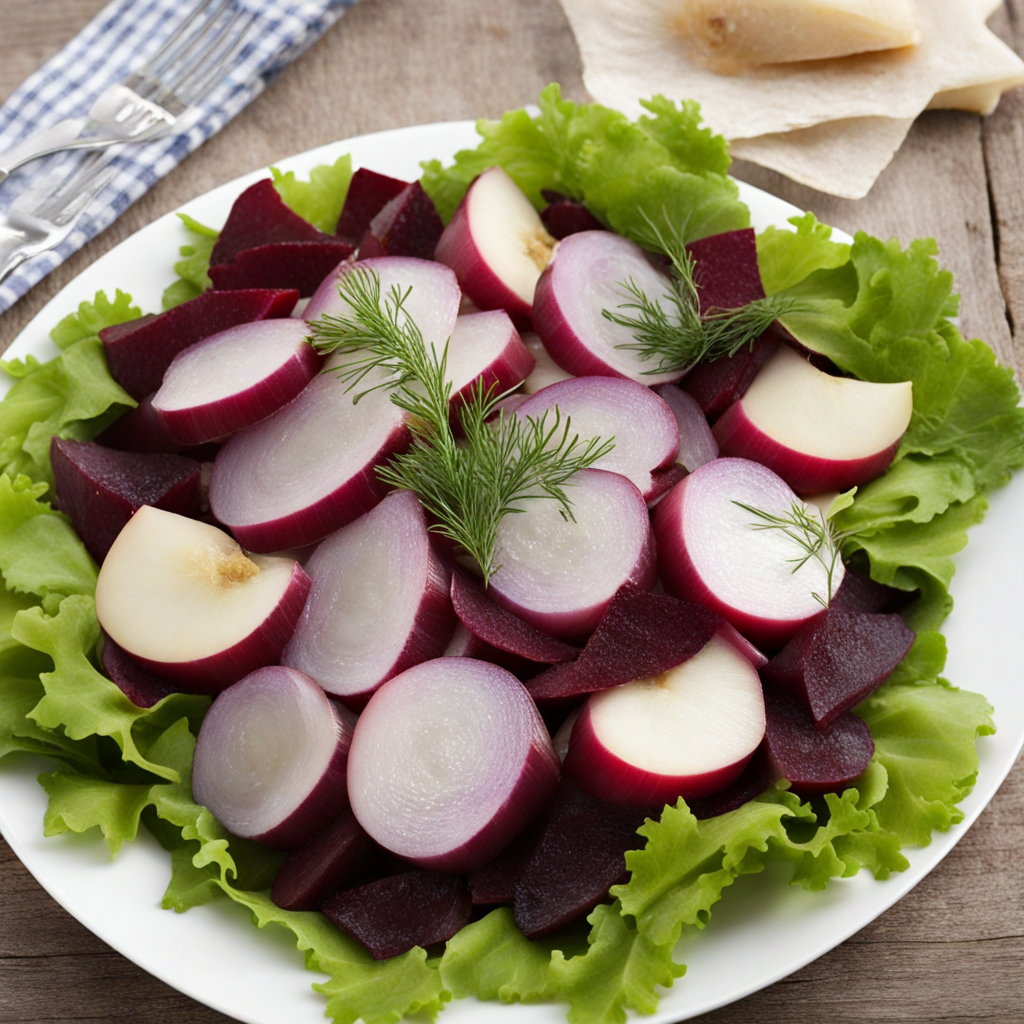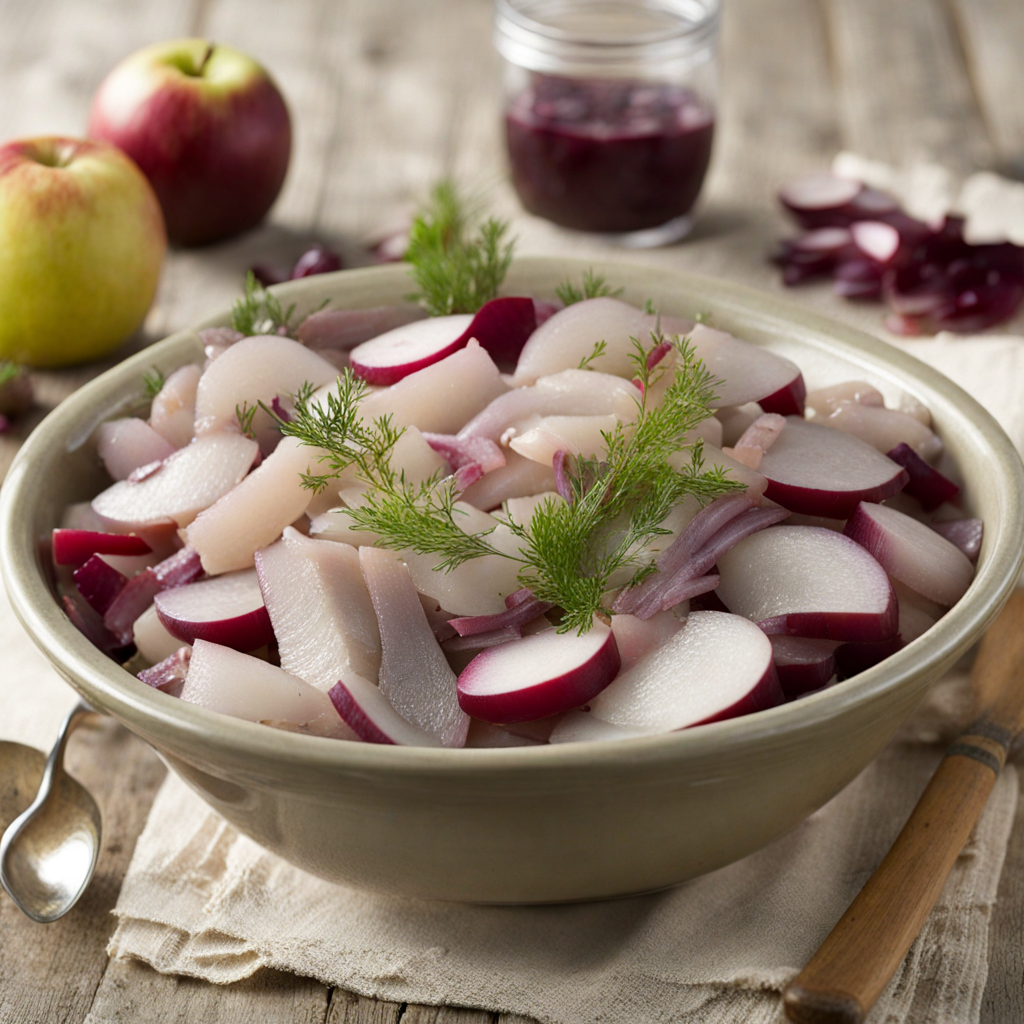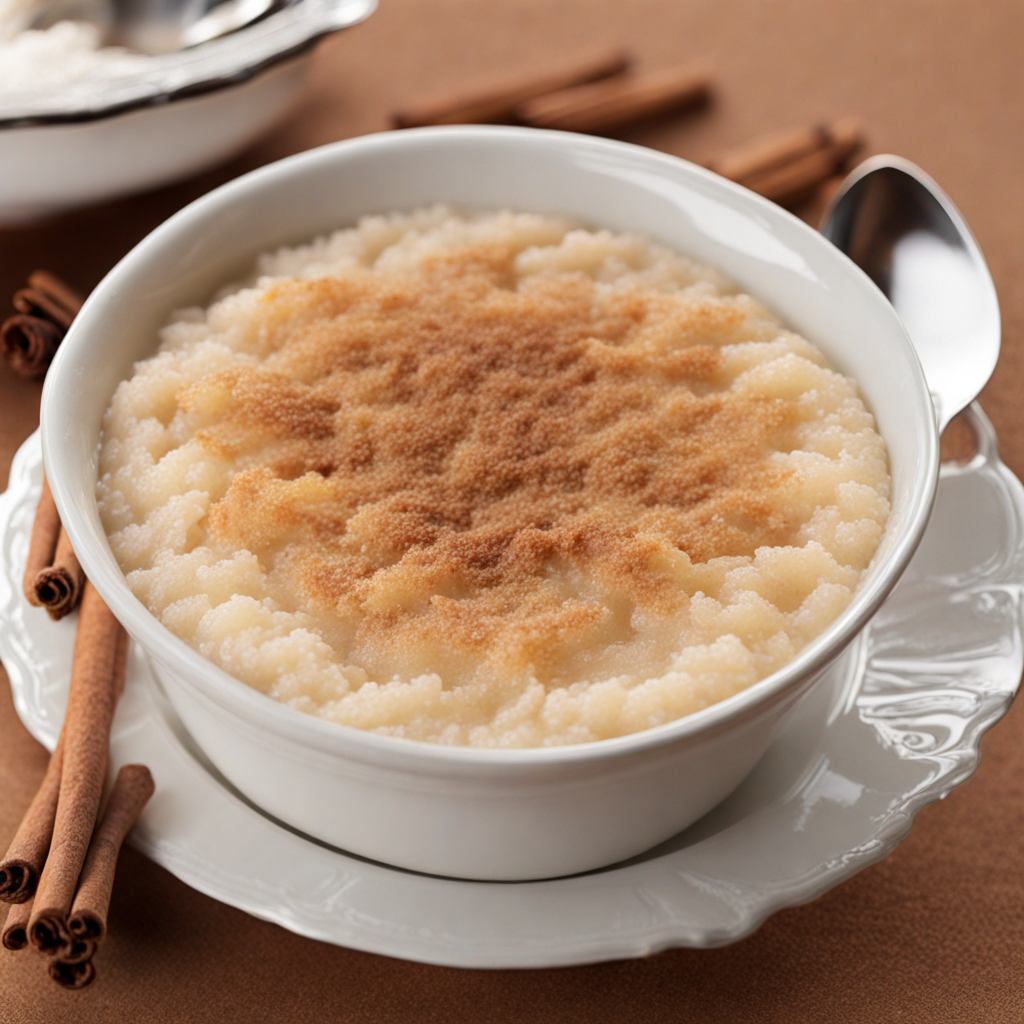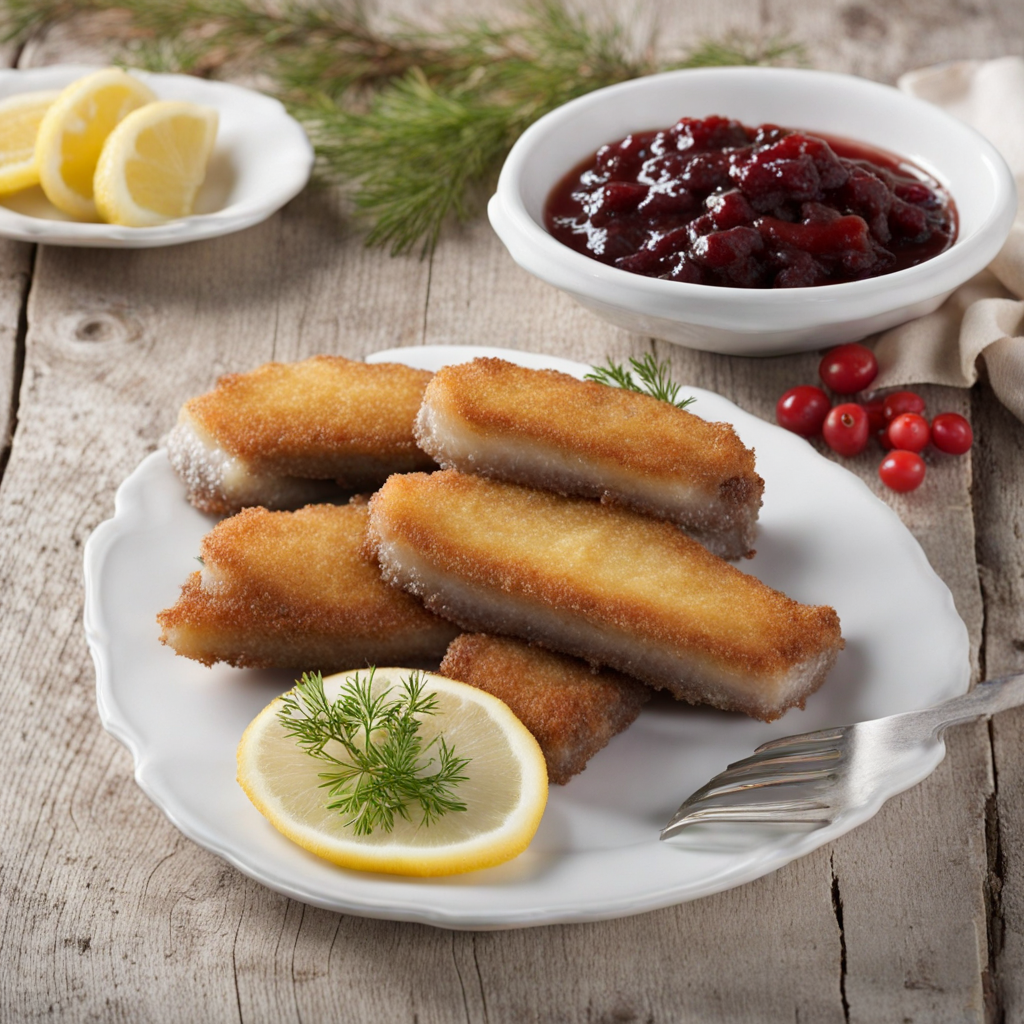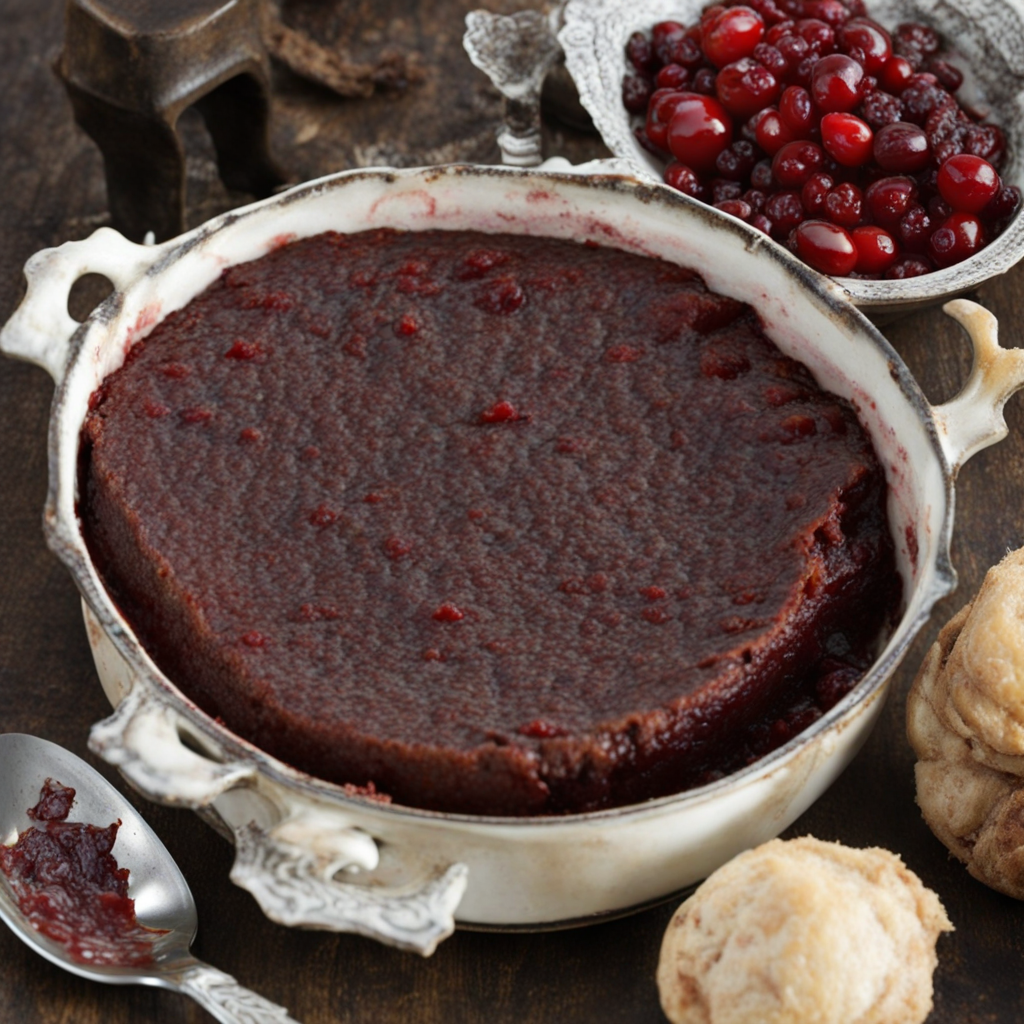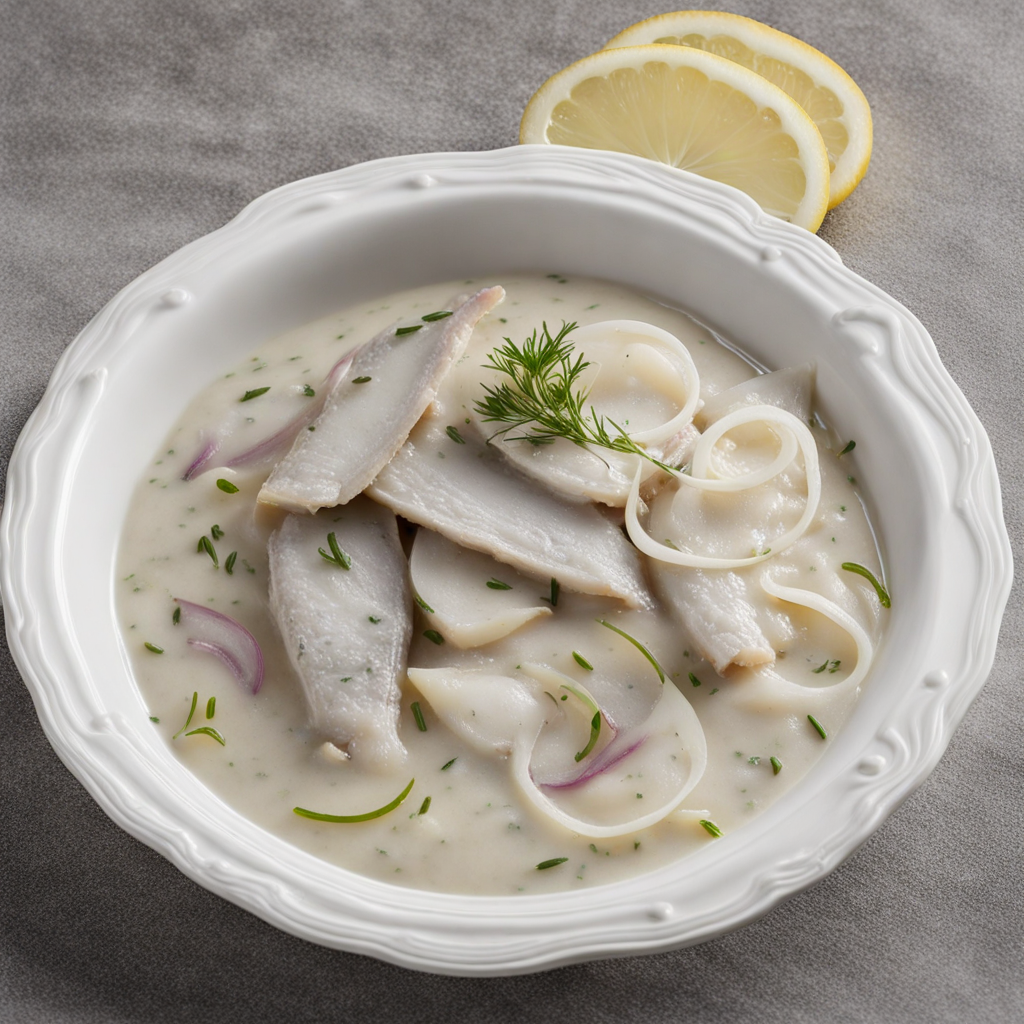Swedish Herring Salad
Swedish Herring Salad, known as "Silltårta" or herring cake, is a delightful dish that embodies the rich flavors and traditions of Swedish cuisine. At its core, the salad features marinated herring, which is typically pickled in a mixture of vinegar, sugar, and spices, giving it a tangy and slightly sweet profile. The herring is then combined with a medley of colorful vegetables, such as diced beets, carrots, and onions, which not only enhance the visual appeal but also add layers of earthiness and crunch to the dish. The creamy dressing, often made from sour cream or mayonnaise, binds the ingredients together, creating a harmonious blend of flavors and textures. What sets Swedish Herring Salad apart is its versatility and the way it reflects the seasonal ingredients of Sweden. The dish can be enjoyed year-round, but is especially popular during festive occasions and holidays. The addition of hard-boiled eggs, fresh dill, or even capers can elevate the flavor profile, offering a delightful contrast to the briny herring. Each bite reveals a balance of savory and sweet notes, making it a refreshing yet hearty option that caters to various palates. Traditionally served as an appetizer or as part of a smörgåsbord, this salad is often accompanied by crispbread and a selection of cheeses, making it a perfect addition to a Swedish feast. The striking colors of the salad, combined with its unique taste, make it not just a dish to savor, but also a feast for the eyes. Whether enjoyed on its own or as part of a larger spread, Swedish Herring Salad is sure to introduce adventurous eaters to the delightful intricacies of Scandinavian flavors.
How It Became This Dish
The History of Sillsallad: A Swedish Culinary Delight Sillsallad, or herring salad, is a quintessential dish in Swedish cuisine that encapsulates the rich tapestry of Sweden's culinary heritage. This colorful, creamy salad is not only a beloved staple at festive gatherings, particularly during Christmas and Midsummer celebrations, but it also mirrors the evolution of Swedish gastronomy influenced by geography, culture, and tradition. Origins of Sillsallad The origins of sillsallad can be traced back to the long-standing tradition of preserving fish, particularly herring, which has been a fundamental part of the Swedish diet for centuries. With Sweden's extensive coastline and rich fishing grounds in the Baltic Sea, herring became a prevalent source of sustenance for the Swedish people. The practice of pickling herring dates back to the Middle Ages when fish was preserved in vinegar and spices to ensure its longevity, especially during the long winters. The word "sill" refers specifically to herring in Swedish, and it is traditionally pickled in various brines, often flavored with onions, spices, and herbs. The term "sallsalad" translates to "salad," which in this context refers to a dish that is more of a creamy amalgamation than a salad in the modern sense. The combination of pickled herring with vegetables and a creamy dressing reflects the Scandinavian penchant for combining flavors and textures. Cultural Significance Sillsallad holds a special place in Swedish culture, particularly during festive occasions. It is a staple on the smörgåsbord, a traditional buffet-style meal featuring a wide array of dishes. The smörgåsbord is not just a meal but a cultural event, often associated with celebrations, family gatherings, and communal feasts. Sillsallad, with its vibrant colors and rich flavors, adds a festive touch to the table. During the Christmas season, sillsallad is particularly significant. It often takes center stage among the array of dishes served during the Julbord, a traditional Swedish Christmas table. The dish embodies the spirit of the holiday, bringing together family and friends to enjoy a meal that is both comforting and nostalgic. Similarly, during Midsummer, when Swedes celebrate the arrival of summer, sillsallad is a common feature, symbolizing the connection to nature and the seasonal bounty of the region. Development Over Time The evolution of sillsallad reflects broader changes in Swedish culinary practices and societal trends. In its early iterations, the dish primarily consisted of basic ingredients—pickled herring mixed with root vegetables like potatoes, carrots, and onions, often bound together with a simple dressing. The combination was hearty and practical, fitting the needs of a rural populace dependent on readily available ingredients. With the advent of the 19th century, Sweden underwent significant social and economic transformations. The rise of industrialization and urbanization led to changes in eating habits and food production. As cities expanded and the middle class grew, the demand for more sophisticated dishes increased. This change prompted the development of sillsallad into a more refined dish, with the addition of ingredients like apples, beets, and sometimes even hard-boiled eggs. The creamy dressing, often made with mayonnaise or a combination of sour cream and mustard, became a hallmark of the dish, enhancing its texture and flavor. In the 20th century, sillsallad began to gain international recognition, particularly with the rise of Swedish cuisine on the global stage. Swedish culinary exports introduced sillsallad to a broader audience, and it started to appear in Swedish restaurants outside of Sweden, contributing to the global appreciation of Scandinavian food. The dish's adaptability allowed for variations that incorporated local ingredients and interpretations, making sillsallad a versatile and appealing option in international menus. Modern Interpretations Today, sillsallad continues to evolve while remaining true to its roots. Modern interpretations often see chefs experimenting with flavors and textures, incorporating elements like dill, horseradish, and even exotic spices to create unique versions of the traditional dish. The use of artisanal pickling methods and high-quality ingredients has also become more prevalent, reflecting a broader trend toward sustainability and local sourcing in contemporary cuisine. Moreover, as dietary preferences shift, sillsallad has adapted to meet the needs of those seeking vegetarian or vegan options. Some variations forgo herring altogether, using marinated vegetables or plant-based proteins to mimic the texture and flavor of the original dish. This adaptability speaks to the enduring nature of sillsallad, allowing it to remain relevant in a rapidly changing culinary landscape. Conclusion Sillsallad is more than just a dish; it is a reflection of Sweden's rich culinary history and cultural identity. Its roots in the preservation of herring highlight the resourcefulness of generations past, while its significance in festive celebrations underscores the importance of food in fostering connections among people. As sillsallad continues to evolve, it remains a delicious testament to the enduring legacy of Swedish cuisine, bridging the gap between tradition and modernity. In exploring the history of sillsallad, we uncover a narrative that weaves together the threads of geography, culture, and social change, ultimately creating a dish that is vibrant, flavorful, and deeply connected to the Swedish way of life. Whether enjoyed at a festive table or adapted for contemporary tastes, sillsallad will forever hold a cherished place in the hearts—and stomachs—of those who partake in its delightful flavors.
You may like
Discover local flavors from Sweden


